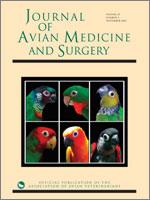The biodiversity crisis is often reported in the news today. As wildernesses become less wild, wildlife species become less present in the remaining wild spaces. Biodiversity is in decline. In fact, the rate of extinctions is currently estimated at 100–1000 times above the pre-human “baseline normal” levels, which has led many to propose that we are in a period of the sixth great extinction. The difference between this sixth extinction period and the previous 5 is that species are going extinct predominantly due to anthropogenic—human driven—impacts. The extinction of species is often related to habitat loss and degradation, wildlife trade, invasive species, and, in a growing number of cases, disease. Today 12% of bird species are threatened with extinction. That is 12%! Veterinarians in private practice (companion, exotic, and poultry), rehabilitation centers, zoological institutions, government agencies, and nongovernment conservation organizations work with avian patients. In this age of increasingly complex threats to the long-term conservation of endangered avian species and media coverage of zoonotic diseases with links to birds (eg, avian influenza, West Nile virus), the roles that veterinarians have in the care for individual patients and flocks, human health, and avian conservation are complex and variable.
I have invited 5 health and conservation professionals working in the field of avian health and conservation to discuss some of the hot topics in avian conservation and the role of veterinarians in this field. Participants are Christine V. Fiorello, DVM, PhD, Dipl ACZM, Response Veterinarian, Oiled Wildlife Care Network, Wildlife Health Center, School of Veterinary Medicine, University of California, Davis, Davis, CA, USA; J. Jill Heatley, DVM, MS, Dipl ABVP (Avian), Dipl ACZM, Associate Professor, Zoological Medicine, College of Veterinary Medicine, Texas A&M University, College Station, TX, USA; Kathryn P. Huyvaert, PhD, Assistant Professor, Department of Fish, Wildlife, and Conservation Biology, Colorado State University, Fort Collins, CO, USA; Peggy Shashy, DVM, Animal Medical Clinic at Sawgrass, Ponte Vedra Beach, FL, USA; and Kristine M. Smith, DVM, Dipl ACZM, Associate Director, Health and Policy, EcoHealth Alliance, New York, NY, USA. I hope that by hearing their perspectives, each of us may be able to more fully consider our roles to ensure the long term conservation of avian species.





